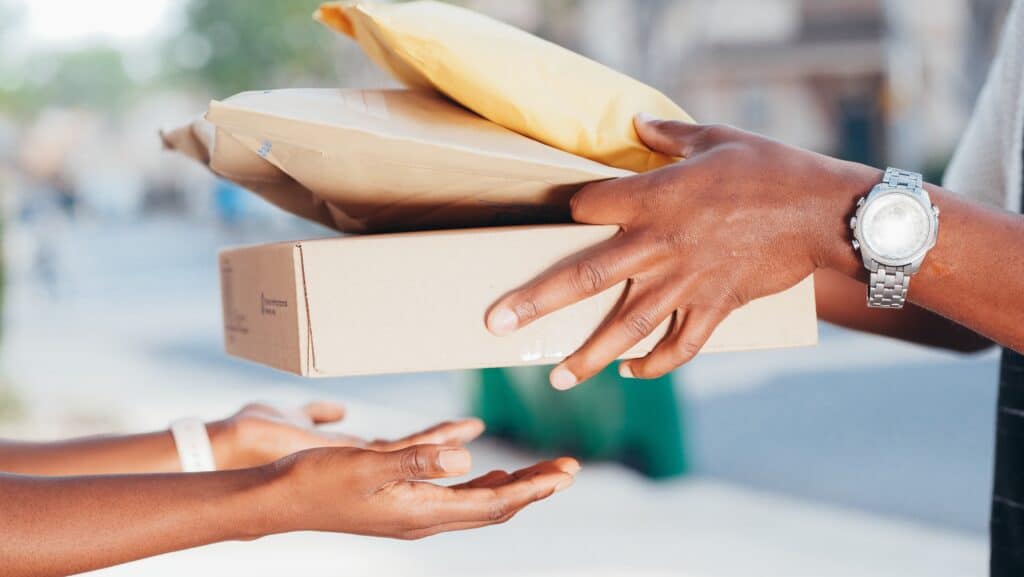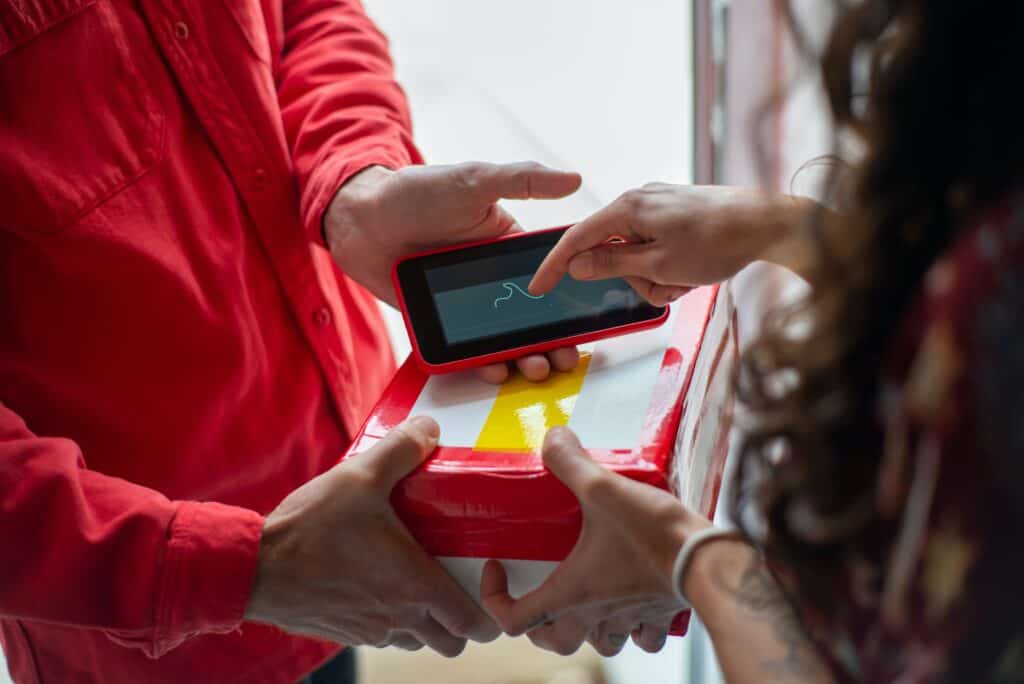What is Last-Mile Tracking? How It Works, Best Practices & More

Wise Systems
What is Last-Mile Tracking? How It Works, Best Practices & More

Wise Systems
The so-called final mile is the most critical, complex, and expensive part of the supply chain. In this article, we’ll discuss how last-mile tracking can mitigate some of the challenges and costs while ensuring better customer experience outcomes.
In this article:
- What is Last-mile Tracking?
- The Role of Last-mile Carriers
- The Importance of Last-mile Tracking
- Key Features for Last-mile Tracking
- The Future of Last-mile Tracking
- Frequently Asked Questions
What is Last-mile Tracking?

Last-mile tracking refers to the technology that enables businesses to monitor the final leg of a product’s journey from a transportation hub to the customer’s doorstep, providing real-time visibility into the status and location of the package.
The Role of Last-mile Carriers
Last-mile delivery service providers such as FedEx, UPS, USPS, DHL, Amazon and other third parties are responsible for the final leg of each delivery. These carriers are constantly seeking ways to shorten the last-mile and improve efficiency, as are private fleets that manage their own final-mile deliveries.
They may offer a range of services, from standard overnight and priority overnight to same-day shipping, catering to the diverse needs of consumers and businesses.
The Importance of Last-mile Tracking
1. Customer Expectations
Ten to 15 years ago customers wouldn’t have batted an eye at deliveries that took days to weeks, but Amazon changed all that. Customers now expect super fast two-day or same-day delivery and want to know where their package is at all times.
Consumers want these kinds of services as part of their delivery experience:
- Real-time updates on the status of their order
- The ability to communicate with the driver
- Driver ETA updates
- Driver tracking
- The ability to rate service experience
2. Operational Efficiency
For businesses, last-mile tracking helps streamline operations, identify inefficiencies, and improve service levels. It allows businesses to monitor the status of deliveries, so they can proactively manage any issues that arise and keep customers informed.
3. Cost Savings
Investing in last-mile tracking can lead to significant cost savings in an area of logistics that is already costly. It can help reduce the number of ‘Where is My Order?’ (WISMO) calls, which make up a good portion of customer service queries. By providing customers with real-time visibility into their deliveries, businesses can reduce the need for these calls and associated costs.
4. Customer Loyalty
Offering customers real-time updates and ensuring timely delivery can greatly improve the customer experience. This can build a sense of customer satisfaction and loyalty that keeps consumers coming back for repeat purchases, something that all businesses are interested in fostering.
Key Features for Last-mile Tracking

Last-mile tracking systems can offer a variety of features, some for the benefit of the business and some for the benefit of the customer:
- Real-Time Tracking – APIs can be used to seamlessly populate tracking details into various third-party systems, such as a branded tracking page, an email or SMS notification, or a customer profile on a website. This provides up-to-the-minute information about the package’s journey, which manages customer expectations and reduces customer calls.
- Customer Communication Tools – Businesses can send automated SMS or email notifications about the status of the delivery, provide updates in case of delays, and allow customers to contact the driver if necessary. This line of communication ensures consumers feel valued, prioritized, and heard.
- Predictive Analytics – By using historical data and machine learning algorithms, modern last-mile tracking systems accurately predict delivery times based on the route, traffic, and number of stops. Customers are happiest when estimated delivery times are in line with actual delivery times.
- Route Optimization – This feature uses AI algorithms to determine the most efficient route for each delivery, taking into account factors such as traffic, distance, and the number of preceding stops. Route optimization can even account for gas station stops.
- Proof of Delivery – Usually occurring in the form of signatures, photos, or barcode scans, proof of delivery helps avoid disputes and provides a clear record of each successful delivery.
- Delivery Scheduling – For larger shipments, businesses can automate the process of setting up delivery appointments. This gives consumers the ability to schedule or change their appointment windows and reduces instances of redelivery.
- Performance Analytics – Detailed analytics typically include metrics such as delivery times, success rates, customer feedback scores, and performance information on specific delivery personnel. Businesses can leverage this data to identify areas for improvement and measure the impact of changes to their delivery process.
The Future of Last-mile Tracking
The importance of last-mile carrier tracking technology will only increase in the coming years. In 2023, 20.8% of retail purchases are expected to take place online, but this may reach 24% over the next 3 years. That means millions and millions more packages that need to be tracked to the last mile.
Emerging trends in the field include increased personalization, flexibility, and open communication. Delivery Experience Management (DEM), which involves proactively ensuring customers receive their orders how and when they expect, is becoming a key strategy for optimizing the delivery experience.
Last-mile tracking is not just about visibility; it’s about creating exceptional delivery experiences.
The Wise Systems delivery automation platform, underpinned by the Dynamic Optimization Engine (DOE), leverages artificial intelligence (AI), and stands out in the last-mile market. This platform is designed to automate and optimize your delivery operations, providing real-time visibility, predictive analytics, route optimization, and much more.
But don’t just take this at face value. Experience the power of the Wise Systems platform firsthand by requesting a demo. See for yourself how this innovative AI-powered solution can help meet and exceed customer expectations, streamline operations, and drive your business forward.
Frequently Asked Questions
What is the last-mile?
The last mile refers to the final leg of a product’s journey from the distribution center to a customer’s hands. It is called the last mile by the logistics industry regardless of distance because it’s the final step in the process.
This is typically the most complex and time-consuming part of the shipping process, as it involves navigating residential areas, dealing with traffic, and ensuring the goods are delivered safely and on time. It is also a critical touchpoint with the customer, making it a key focus of businesses looking to improve customer satisfaction and loyalty.
How does last-mile tracking improve customer satisfaction?
Last-mile tracking improves customer satisfaction by keeping customers informed with real-time updates on where their package is and when it will be delivered. This transparency reduces the uncertainty and anxiety associated with waiting for delivery and allows customers to plan their schedules accordingly.
Features like direct communication with the driver and the ability to rate their delivery experience contribute to a sense of control and engagement.
What role does artificial intelligence play in last-mile tracking?
Artificial intelligence plays a key role in last-mile tracking by powering features such as predictive analytics and route optimization. AI algorithms can analyze historical data to predict accurate delivery times and determine the best routes taking into account variables such as traffic conditions and delivery locations.


